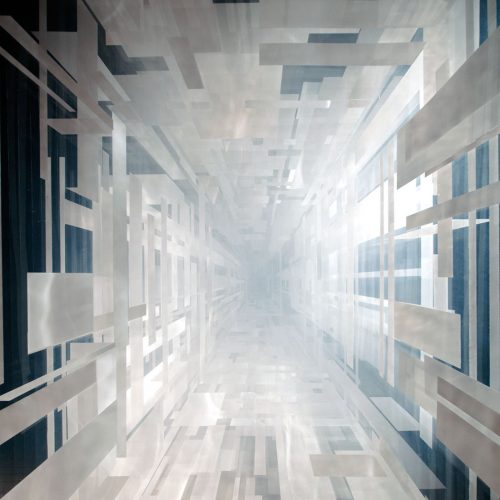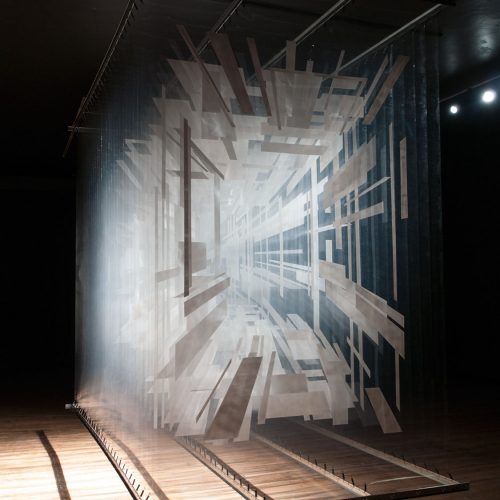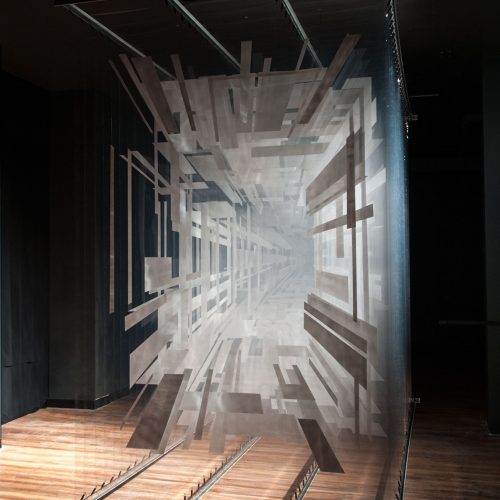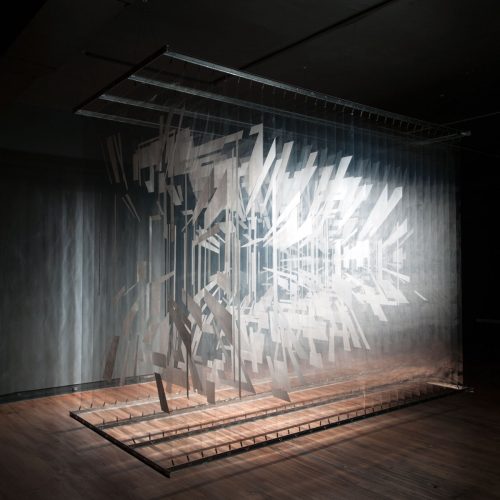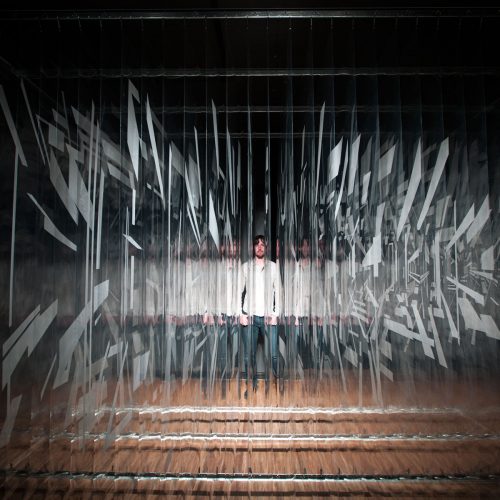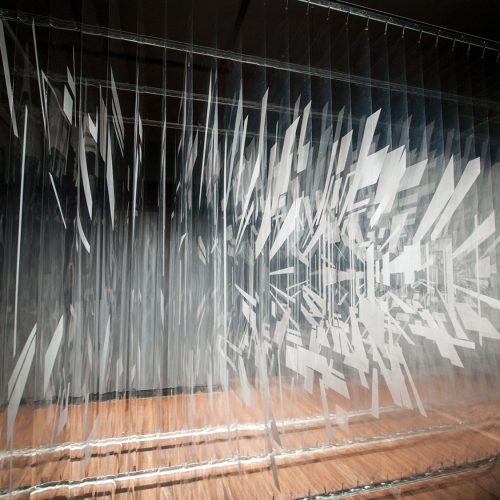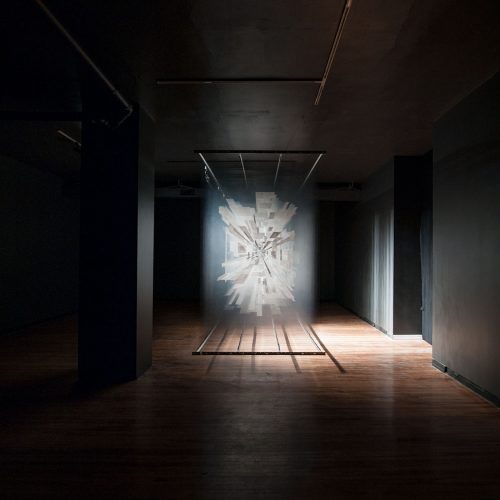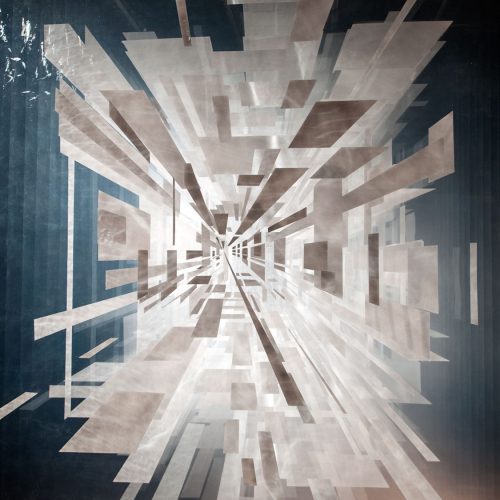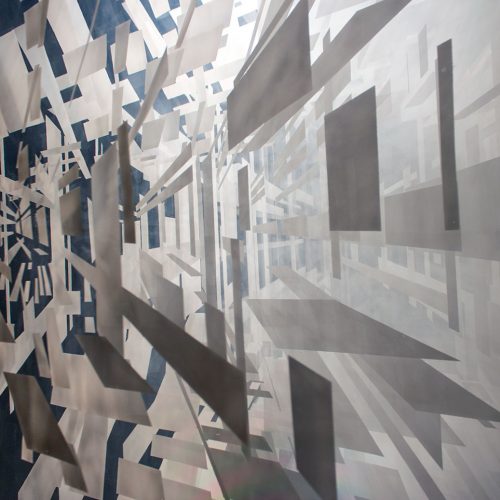The “Holocene Era” is the geological epoch in which we currently live; it extends back to approximately 10,000 B.C. placing us currently in the year 12,012 H.E. Unlike any other period, it has seen intensive geological change through the emergence and then cultural/environmental development of the human race. David Spriggs’ sculptural installation of the same name (which translates roughly as “entirely recent”) portrays this epoch through a technical experiment in illusion, both architectural and ethereal.
Based out of Vancouver, Spriggs works primarily in phenomenological experience; he creates stunningly convincing illusions of airy, voluminous objects that we enter visually. This process relies upon the way we interpret vision, and exploits our Gestaltian susceptibility to illusion conflating disparate parts into an actualized whole. Holocene’s layering of warped rectangular forms presents a hyperbolic modernist reduction of the whole of human existence into one infinitely extended, anthropic abstraction. The novelty of this encounter allows for a pure abandonment to beauty, but, Spriggs’ installation strategy undermines the veracity of its own illusion by allowing the viewer access to the sides of his installation, where the individual sheets are identifiable and the depth created by the layering is pulled apart… (continued below)
